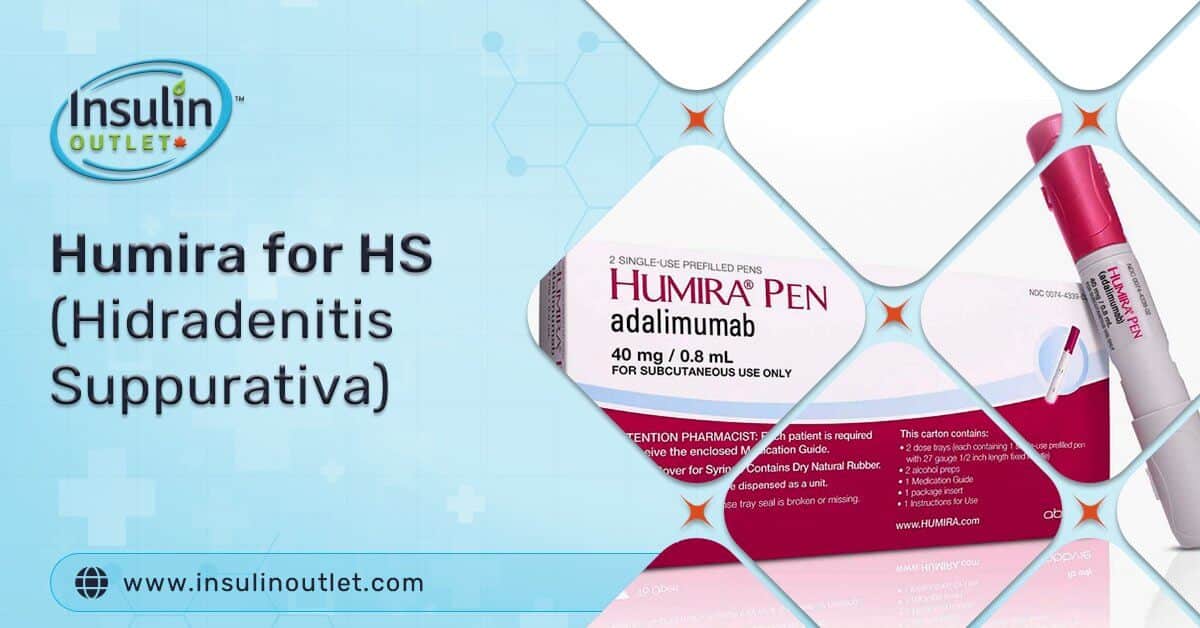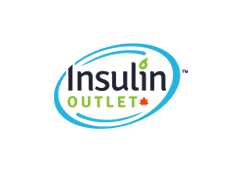
Insulin treatment is indispensable for people with diabetes as it supplements their natural insulin levels. The insulins that are available on the market vary based on onset and duration of action. This gives us three categories – rapid-acting, intermediate-acting, and long-acting insulins.
Fast-acting insulin encompasses both rapid-acting and regular human insulin. Rapid-acting insulin (e.g., Humalog) starts working within 5 to 15 minutes and lasts for 4 to 6 hours. Regular human insulin starts working within 30 minutes to 1 hour and lasts for 6 to 8 hours.
In this article, we will answer whether Fiasp is the same as Humalog and detail the properties of each drug in the management of diabetes.
Fiasp is an FDA-approved prescription medication that manages blood sugar levels for diabetic patients. It’s indicated for both type 1 and type 2 diabetics (adults and children).
Fiasp is a rapid-acting insulin that’s rapidly absorbed into the bloodstream. The active ingredient in this drug is insulin aspart. You can find Fiasp in vial, FlexTouch pen, or PenFill cartridge forms. A single strength of 100 units per milliliter (units/mL).
Fiasp is effective for the management of chronic hyperglycemia in type 1 and type 2 diabetes. In fact, the American Diabetes Association recommends the use of Fiasp for patients with poorly controlled blood sugar levels.
Because Fiasp is rapid-acting, it should be administered during mealtime to quickly regulate blood sugar levels. Your Fiasp dose should be taken either at the beginning of your meal or within 20 minutes after starting your meal.
To ensure timely dosing and prevent missed doses, consider using a medication reminder system. Some options include setting alarms, timers, or the use of reminder apps available for download on your smartphone.
Side effects of Fiasp
Similar to all pharmacological drugs, Fiasp may cause mild or severe side effects. For comprehensive information on Fiasp’s potential side effects, consult your healthcare provider
Here’s a list of some commonly reported side effects:
- Infusion at the site of injection.
- Lipodystrophy, which describes the abnormal modification of adipose tissues.
- Weight gain.
- Cold or flu symptoms.
- Headache.
Most of these mild side effects typically resolve within a few days to weeks. However, if they persist or worsen, consult your healthcare provider.
Serious side effects of Fiasp are very rare. With that said, they can be life-threatening. Here are some rare side effects of Fiasp:
- Hypoglycemia (i.e., low blood sugar) due to an overdose, which manifests as dizziness, fatigue, sweating, and feeling irritable/anxious.
- Hypokalemia (i.e., low blood potassium levels), which manifests as heart arrhythmias, unexplained fatigue, and muscle twitches.
- An allergic reaction.
In children, the side effects of Fiasp are almost identical to those experienced by adults. However, the incidence may differ slightly. For instance, children commonly experience cold or flu-like symptoms (e.g., headache, congested nose, fever, vomiting). Additionally, irritation at the site of injection and vomiting may also occur.
What is Humalog?
Humalog is a brand-name prescription medication that’s approved by the FDA to regulate blood sugar levels in individuals with type 1 or type 2 diabetes. There are two main variants of Humalog:
- Humalog.
- Humalog Mix.
Both are approved for use in adults with type 1 or type 2 diabetes. However, Humalog is also approved for children aged 3 years and older with type 1 diabetes.
Humalog contains insulin lispro, which is a rapid-acting insulin analog (i.e., a synthetic version of the body’s natural insulin). On the other hand, Humalog Mix combines insulin lispro with a longer-acting insulin called insulin lispro protamine. Humalog is typically administered as a subcutaneous injection. It can also be administered intravenously by healthcare professionals over time. However, this mostly occurs in emergency situations, such as severe hyperkalemia.
Humalog is available in various forms. For example, it comes in vials for use with insulin syringes or pumps (available in 3-mL and 10-mL sizes). Both come with a strength of 100 units per mL (U-100). Additionally, Humalog is available in disposable and prefilled injection pens:
- Humalog KwikPen (available in a 3-mL size with strengths of U-100 and U-200).
- Humalog Tempo Pen (available in a 3-mL size with a strength of U-100).
- Humalog Junior KwikPen (available in a 3-mL size with a strength of U-100).
For those who have reusable insulin pens, Humalog is available in cartridges (available in a 3-mL size with a strength of U-100).
To sum up:
Humalog is a rapid-acting insulin that contains insulin lispro. Its onset of action is within 15 minutes and lasts for approximately 4 to 6 hours.
Humalog Mix is a combination of insulin lispro and insulin lispro protamine. Therefore, it blends rapid-acting and intermediate-acting insulins. Its onset of action is within 15 minutes, but it provides an extended duration of around 22 hours.
Side effects of Humalog insulin
Humalog may induce mild or severe side effects. If you experience any unusual symptoms after the injection of Humalog insulin, be sure to reach out to your doctor or head to the nearest emergency department.
Common side effects of Humalog and Humalog Mix include:
- Injection site reactions, such as pain, redness, itching, and swelling around the injection area.
- Lipodystrophy.
- Rash.
- Itching.
- Swelling of the feet or ankles.
- Weight gain.
Serious side effects of Humalog insulin include hypokalemia (low blood potassium levels), which may trigger the following symptoms:
- Muscle weakness.
- Fatigue.
- Muscle cramps.
- Constipation.
- Increased urination.
- Thirst.
- Irregular heartbeat.
Humalog vs Fiasp – What’s the difference?
“Is Fiasp the same as Humalog?”
Because both drugs are rapid-acting insulins that control daily blood sugar levels. Therefore, it’s no surprise that many people can’t differentiate between Fiasp insulin and Humalog. However, the differences lie in nuances, such as duration of action, cost, and whether any other molecules are added to the blend.
For instance, Humalog Mix is completely different from Fiasp and Humalog due to the added long-acting insulin. This gives it different functions, indications, and side effects.
This is why it’s important to learn about the differences between Humalog vs Fiasp to make informed decisions:
Mode of Administration
Fiasp contains insulin aspart, which is an insulin analog that is rapidly absorbed into the bloodstream. This property makes it an efficient option to reduce blood glucose levels after meals. The drug is most commonly administered via subcutaneous injection.
Similarly, Humalog contains insulin lispro, which is another rapid-acting insulin analog. It’s also administered via the subcutaneous route (like most insulins).
Duration of Action
Fiasp has a rapid onset of action and a short duration of action. Therefore, multiple injections may be needed throughout the day to keep your insulin base levels in the normal range.
Similarly, Humalog exerts its effects for a shorter duration that typically lasts around 4 to 6 hours. Despite its shorter duration, Humalog achieves near-peak insulin levels briefly after administration, which provides rapid action during periods of elevated glucose levels, such as post-prandially (i.e., after meals).
Coverage
Fiasp and Humalog both use traditional insulin units to determine the dosage. This ensures precise control over insulin administration.
Efficacy in Diabetes Management
Both Fiasp and Humalog have demonstrated efficacy in managing diabetes. Many world-renowned organizations, such as the American Diabetes Association, advocate for the use of these drugs to treat type 1 and type 2 diabetes. The rapid-acting nature of these drugs makes them ideal to use during the day (before meals) in order to prevent extreme peaks in insulin levels.
Over time, this blood sugar control will mitigate the risk of severe complications related to diabetes, such as diabetic retinopathy, diabetic nephropathy, and diabetic foot.
Cost
- The cost of Humalog is $5 per vial.
- The cost of Fiasp is $14 per vial.
Despite the difference in prices, both medications are very effective in the management of diabetes. Therefore, the choice of treatment should depend on other factors, such as the professional opinion of your healthcare provider, specific response to either drug, insurance coverage, and your personal preference.
The Bottom Line
When you think about Fiasp vs Humalog, it’s indispensable to understand that both are effective medications. Fiasp provides rapid onset and shorter duration of action as a rapid-acting insulin. On the other hand, Humalog is also a rapid-acting insulin that could become longer-acting when insulin lispro protamine is added to the mix. In this case, we refer to it as Humalog Mix. Be sure to have a comprehensive discussion with your doctor to make an informed decision about the choice of insulin that works best for you.
Share:













